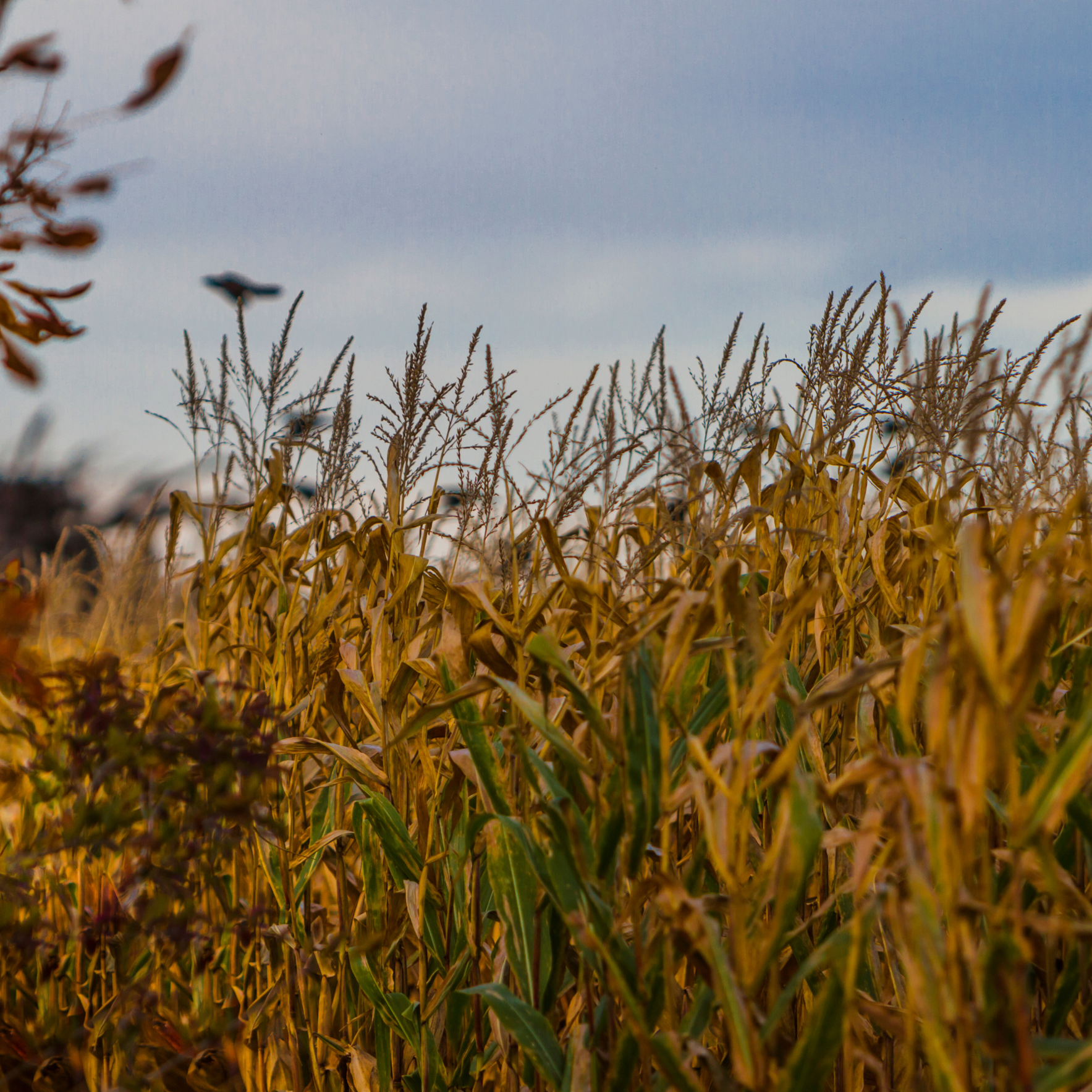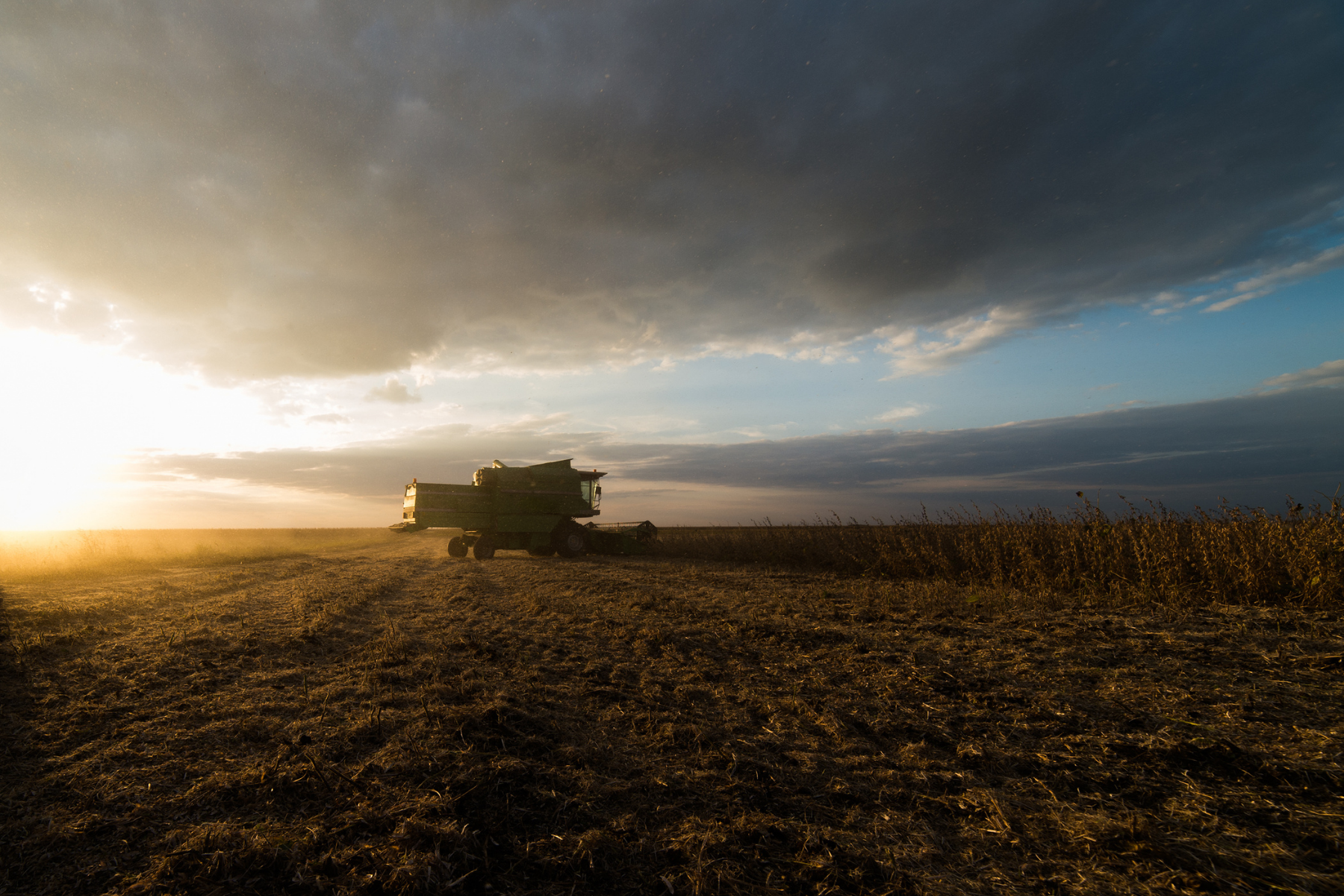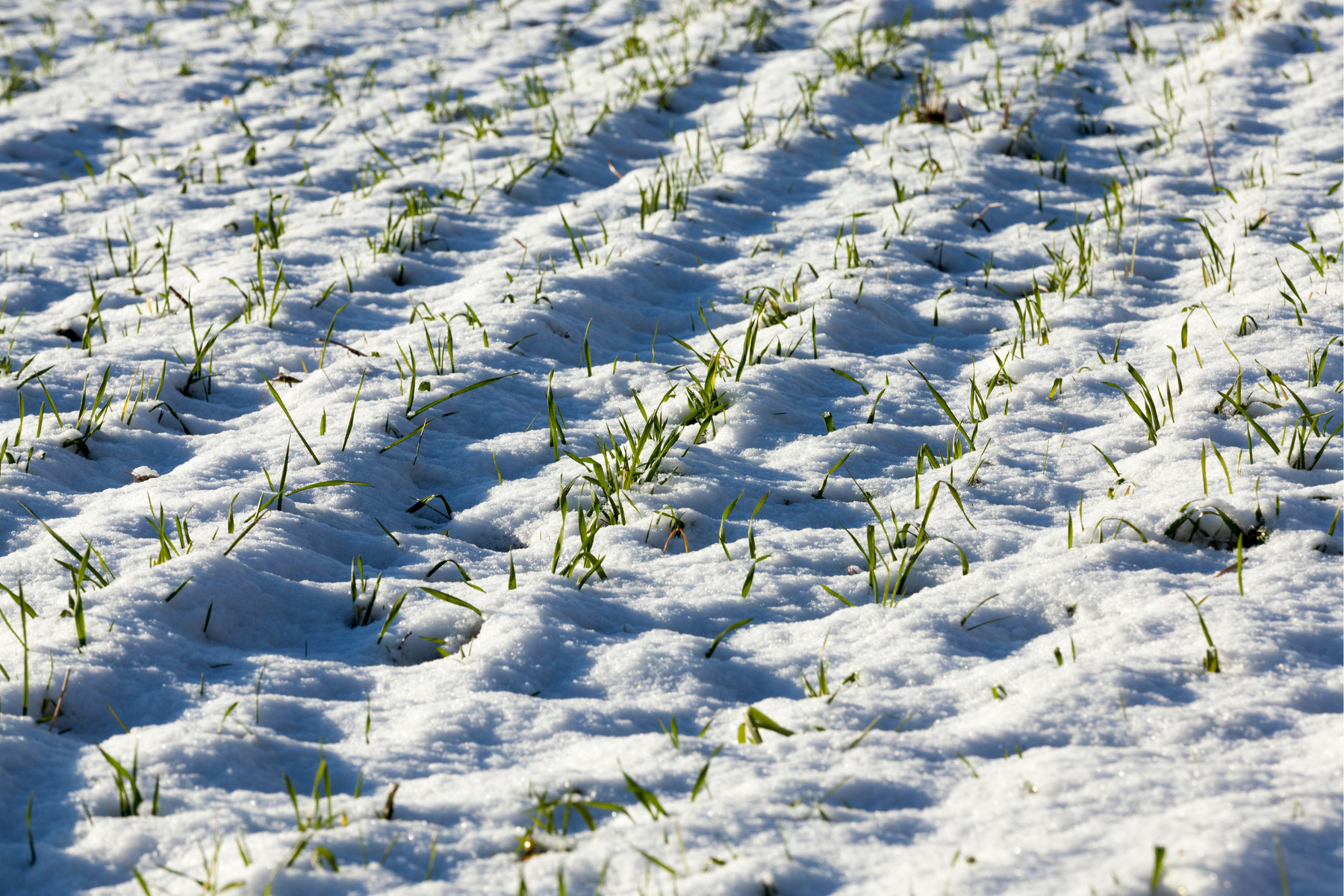Late-season diseases in corn and soybeans can still impact grain quality, storability, and profitability. By scouting for diseases in October, growers can make better decisions about harvest timing and set the stage for improved management next season.
Corn Diseases to Watch for in October
Gibberella Ear Rot (Gibberella zeae)
Gibberella ear rot thrives in cool, wet fall conditions, infecting corn ears via the silks. It manifests as pinkish mould on the ear tip and can lead to vomitoxin (DON) contamination, affecting marketability.
Scouting Tips:
- Check ears for pink mould, especially in fields that experienced moist conditions during silking.
- Harvest early if infection is present, and test for DON before feeding to livestock.
Next Year Management:
- Choose hybrids with improved resistance to Gibberella ear rot.
- Rotate out of corn to break the pathogen cycle.
- Consider fungicide applications at silking if conditions are conducive to infection.
Diplodia Ear Rot (Stenocarpella maydis)
Diplodia ear rot presents as white mould starting at the base of the ear, which reduces grain quality but doesn’t produce mycotoxins.
Scouting Tips:
- Look for white mould at the ear’s base in fields with corn residue.
- Harvest and dry infected grain quickly to avoid storage issues.
Next Year Management:
- Plant hybrids with good tolerance to Diplodia.
- Rotate to non-host crops, such as soybeans, and manage corn residue.
- Improve field drainage, as Diplodia thrives in moist conditions.
Tar Spot (Phyllachora maydis)
Tar spot is relatively new in Ontario but can cause significant yield losses. It produces small, raised black spots on leaves, leading to premature leaf death and reduced grain fill.
Scouting Tips:
- Carefully inspect both the lower and upper parts of the canopy for black lesions. If the pathogen has been present in the field previously, infections often start at the bottom of the canopy. If the pathogen arrives via wind patterns, it typically appears in the upper canopy first. After a wind-borne infection, tar spot can become soil-borne and will start emerging from the lower canopy in future seasons.
- Pay attention to areas with a history of heavy residue from corn-on-corn rotation.
Next Year Management:
- Select hybrids with emerging resistance to tar spot.
- Rotate fields out of corn to reduce residue.
- Consider a fungicide application if tar spot conditions develop during the growing season.
Northern Corn Leaf Blight (Exserohilum turcicum)
Northern Corn Leaf Blight is one of the most common diseases in Ontario corn. The disease appears as long, elliptical grey-green lesions on the leaves, reducing photosynthesis and yield potential, especially during grain fill.
Scouting Tips:
- Check the middle and lower leaves for lesions, particularly after periods of high humidity or wet weather.
- Later-planted corn is often more vulnerable.
Next Year Management:
- Plant hybrids with high resistance to Northern Corn Leaf Blight.
- Rotate out of corn to reduce disease pressure.
- Consider timely fungicide applications, especially in high-risk years.
Grey Leaf Spot (Cercospora zeae-maydis)
Grey leaf spot thrives in warm, humid conditions. The disease shows up as rectangular grey lesions on corn leaves, and severe infections can cause premature leaf death, limiting grain fill.
Scouting Tips:
- Look for rectangular lesions on the lower leaves first.
- Fields with high corn residue or previous infections are more prone to the disease.
Next Year Management:
- Use disease-resistant hybrids where grey leaf spot is prevalent.
- Rotate with non-host crops and manage residue by tilling where feasible.
- Fungicide applications at the VT to R1 growth stage can reduce disease pressure.
Soybean Diseases to Monitor in October
White Mould (Sclerotinia sclerotiorum)
White mould continues to be a major issue in Ontario, especially in dense canopies with high yield potential. It causes white, fluffy mould on stems and pods, and its hard sclerotia overwinter in the soil.
Scouting Tips:
- Look for white, fluffy mould near the plant base and wilted plants in wet, dense areas.
- Check for black sclerotia inside the stems and pods by cutting them open. While the exterior will show fuzzy white mould, the sclerotia bodies themselves are hidden within the plant tissue.
Next Year Management:
- Select varieties with partial resistance to white mould.
- Rotate to non-host crops like corn or wheat to break the mould cycle.
- Use wider row spacing or lower planting density to improve air circulation.
- Consider fungicide applications at R1 (flowering) if conditions are conducive to white mould.
Phytophthora Root Rot (Phytophthora sojae)
Late-season Phytophthora root rot can cause wilting and yellowing of plants in low-lying, wet areas. It attacks roots, and the plants may die prematurely.
Scouting Tips:
- Check for wilting, stunted plants in poorly drained areas.
- Roots will often appear dark and rotted, and plants may easily pull out of the ground.
Next Year Management:
- Use Phytophthora-resistant varieties or those with Rps genes.
- Improve field drainage and reduce soil compaction.
- Avoid planting soybeans in cold, wet soils that favour infection.
Soybean Cyst Nematode (Heterodera glycines)
SCN is a silent yield robber, and symptoms might not be visible until late in the season. SCN damages roots, stunting plants and reducing pod fill.
Scouting Tips:
- Pull up plants and inspect the roots for small, white to yellow cysts.
- Check areas with poor growth and chlorotic (yellow) plants.
Next Year Management:
- Rotate with non-host crops like corn, wheat, or alfalfa.
- Use SCN-resistant soybean varieties and rotate resistance genes to slow nematode adaptation.
- Improve soil health by incorporating organic matter and cover crops.
Brown Stem Rot (Phialophora gregata)
Brown Stem Rot (BSR) causes browning inside the stems and interveinal chlorosis on the leaves. It reduces yield by interfering with nutrient transport in the plant.
Scouting Tips:
- Split the stems of symptomatic plants and check for internal browning.
- Interveinal yellowing on the leaves can also signal BSR.
Next Year Management:
- Rotate out of soybeans, especially in fields with a history of BSR.
- Choose soybean varieties with BSR resistance.
- Improve drainage and soil health to reduce disease severity.
Tips for Next Season: Preventive Measures for Late-Season Diseases
- Seed Selection:
Corn: Select hybrids resistant to key diseases like Gibberella, Northern Corn Leaf Blight, Diplodia, and tar spot. Look for hybrids with good standability and resistance to lodging, which helps prevent ear rots.
Soybeans: Choose varieties with resistance to white mould, Phytophthora root rot, SCN, and BSR. Rotating resistance genes for SCN is especially important. - Soil Health & Field Drainage:
Many diseases, especially Phytophthora, Diplodia, and white mould, thrive in poorly drained soils. Improve drainage through field tiling, reducing compaction, and maintaining good soil structure with cover crops and organic matter additions. - Crop Rotation:
Rotating out of host crops (e.g., corn and soybeans) helps reduce inoculum for diseases like white mould, SCN, Northern Corn Leaf Blight, and brown stem rot. Implement at least a 2-3 year rotation for better disease management. Additionally, keeping fields as weed-free as possible is crucial, as certain weeds can also serve as hosts for these pathogens. - Fungicide Application:
Fungicides can be a valuable tool for controlling diseases like Northern Corn Leaf Blight, grey leaf spot, and white mould, especially in high-pressure years. Apply fungicides at key growth stages: VT-R1 in corn and R1-R3 in soybeans. Be strategic—monitor weather patterns and disease forecasting tools to ensure the timing is right.
Key Learnings
By scouting now and taking preventive steps for next year, you can minimize yield losses and improve your crop’s marketability. Staying proactive with seed selection, soil health, crop rotation, and fungicide use will protect your fields from these common Ontario diseases, helping you sustain high yields and profitability.
Summary
Corn Diseases:
- Gibberella Ear Rot: Causes pink mould, can lead to vomitoxin contamination. Early harvest and resistant hybrids help manage risk.
- Diplodia Ear Rot: White mould on the ear base; prioritize quick harvest and drying for infected grain.
- Tar Spot: Black lesions on leaves can reduce photosynthesis. Hybrid resistance and fungicides are key strategies.
- Northern Corn Leaf Blight: Long grey lesions on leaves; plant resistant hybrids and consider fungicide applications.
- Grey Leaf Spot: Rectangular grey lesions, best controlled with resistant hybrids and timely fungicide applications.
Soybean Diseases:
- White Mould: White fluffy mould on stems, thrives in dense canopies. Rotate crops, use resistant varieties, and apply fungicides.
- Phytophthora Root Rot: Causes root rots and stunted plants in poorly drained soils. Use resistant varieties and improve drainage.
- Soybean Cyst Nematode (SCN): A silent yield robber. Rotate resistance genes and rotate with non-host crops.
- Brown Stem Rot: Browning inside stems; rotate crops and choose resistant varieties.
Next Year Management:
- Seed Selection: Opt for resistant hybrids and varieties.
- Soil Health: Improve drainage, reduce compaction, and use cover crops.
- Crop Rotation: Rotate with non-host crops to break disease cycles.
- Fungicide Applications: Apply fungicides strategically based on disease pressure and weather conditions.
Proactive scouting, timely harvest, and planning for next year can help reduce disease impacts and protect your yields.




